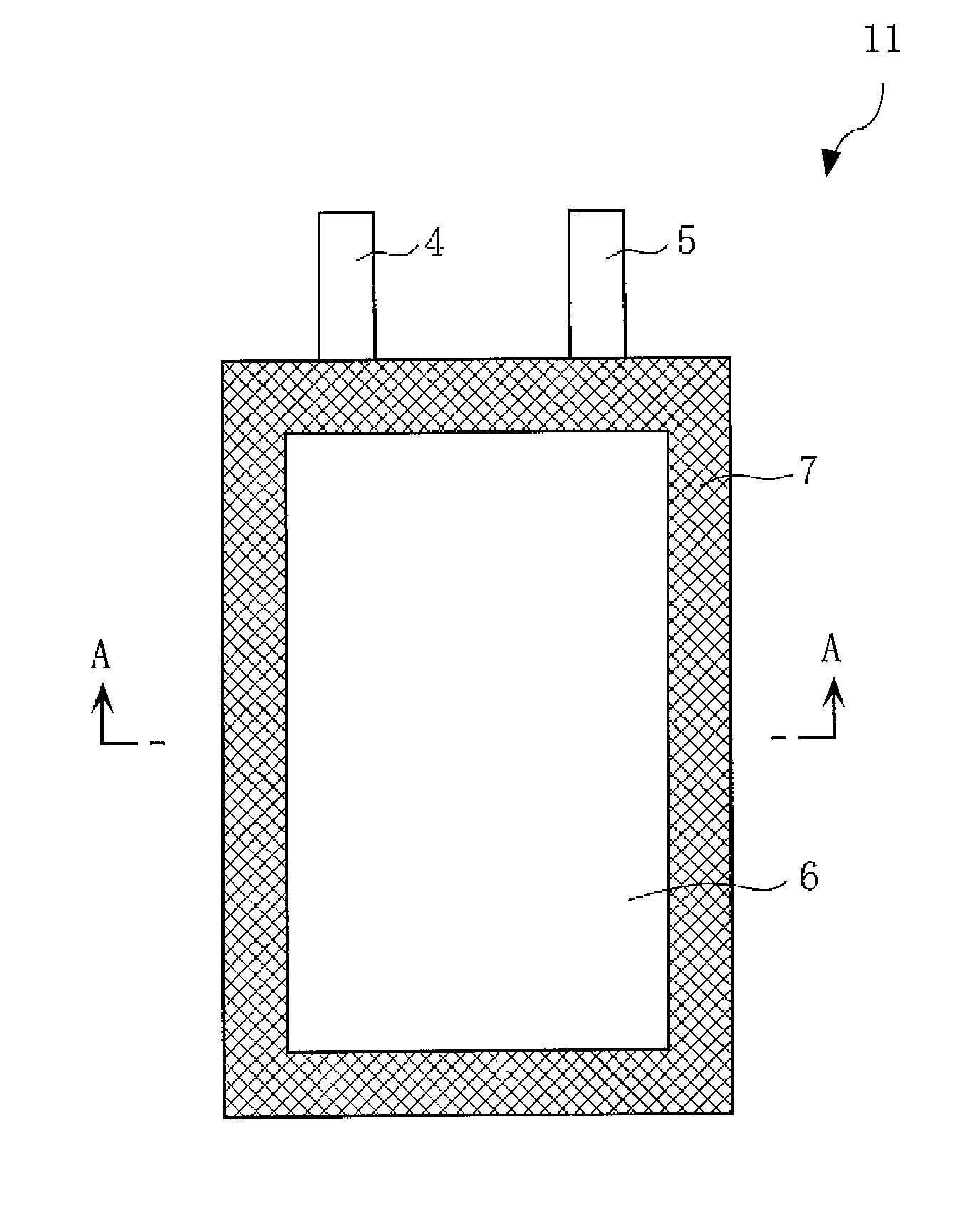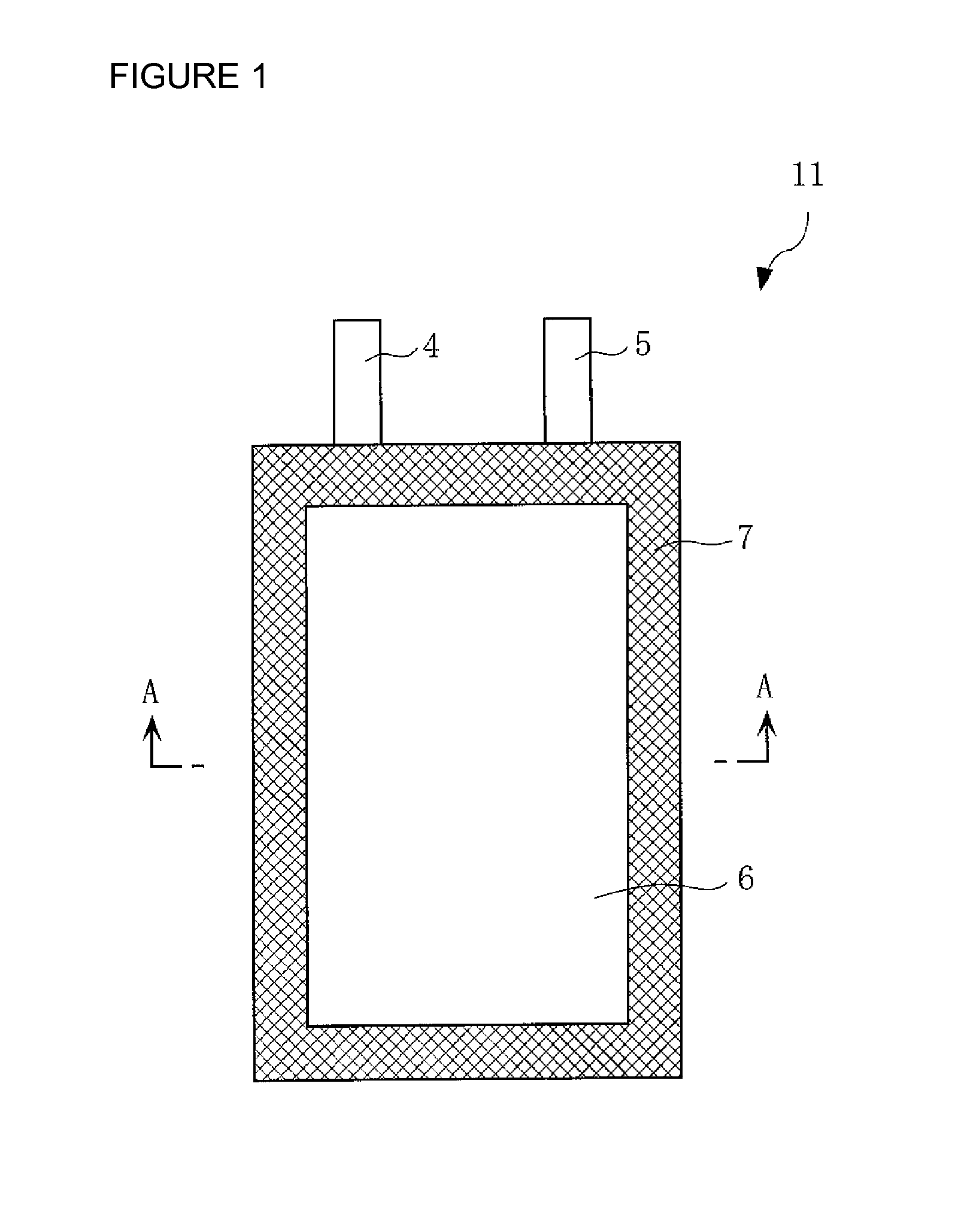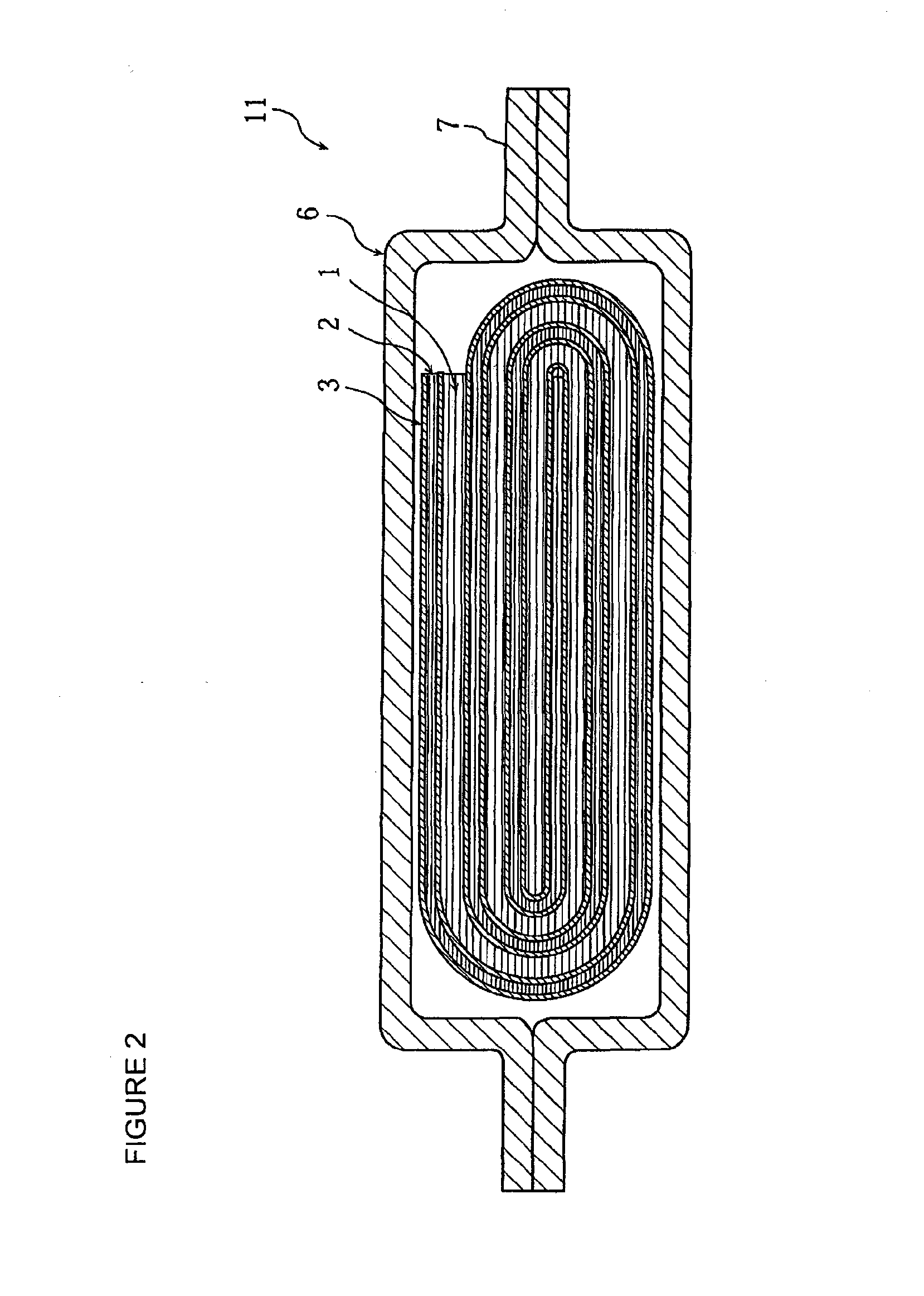Positive electrode active material for nonaqueous electrolyte secondary battery, method for making the same, positive electrode including the same, and battery including the positive electrode
a technology of nonaqueous electrolyte and active material, which is applied in the direction of secondary cells, non-aqueous electrolyte cells, cell components, etc., can solve the problem of reducing the capacity of the nonaqueous electrolyte secondary battery, lowering the battery characteristics, and the technique is not sufficiently suppressing the reaction between the positive electrode and the electrolyte, so as to reduce the resistance of the positive electrode surface, the effect of reducing the charge-d-
- Summary
- Abstract
- Description
- Claims
- Application Information
AI Technical Summary
Benefits of technology
Problems solved by technology
Method used
Image
Examples
first example
Example 1
[0050]A battery was fabricated by the same method as described above in the embodiment. This test cell is hereinafter referred to as “Example Battery A1”.
Example 2
[0051]A battery was fabricated as in Example 1 except that the amount of the compound containing erbium and a carbonate was changed to 0.017% by mass on an elemental erbium basis (0.0093% by mass on a CO3 basis) relative to lithium cobaltate. This test cell is hereinafter referred to as “Example Battery A2”.
Example 3
[0052]A battery was fabricated as in Example 1 except that the amount of the compound containing erbium and a carbonate was changed to 0.34% by mass on an elemental erbium basis (0.18% by mass on a CO3 basis). This test cell is hereinafter referred to as “Example Battery A3”.
Comparative Example 1
[0053]A battery was fabricated as in Example 1 except that a compound containing erbium and a carbonate was not adhered to the surface of lithium cobaltate particles (positive electrode active material particle...
second example
[0070]In the Second Example, the effect of using a rare earth element other than erbium was investigated.
example 1
[0071]A battery was fabricated as in Example 1 of the First Example except that lanthanum nitrate hexahydrate was used instead of erbium nitrate pentahydrate and that a compound containing lanthanum and carbonate was adhered to the surface of the lithium cobaltate particle in an evenly dispersed form. The amount of the compound containing lanthanum and a carbonate was 0.057% by mass on an elemental lanthanum basis (0.037% by mass on a CO3 basis) relative to lithium cobaltate. The amount of the adhering compound containing lanthanum and a carbonate is equal to the number of moles of the compound containing erbium and a carbonate used in Example 1 of the First Example in terms of the number of moles of lanthanum. This test cell is hereinafter referred to as “Example Battery B1”.
Example 2
[0072]A battery was fabricated as in Example 1 of the First Example except that neodymium nitrate hexahydrate was used instead of erbium nitrate pentahydrate and that a compound containing neodymium a...
PUM
| Property | Measurement | Unit |
|---|---|---|
| particle size | aaaaa | aaaaa |
| temperature | aaaaa | aaaaa |
| temperature | aaaaa | aaaaa |
Abstract
Description
Claims
Application Information
 Login to View More
Login to View More - R&D
- Intellectual Property
- Life Sciences
- Materials
- Tech Scout
- Unparalleled Data Quality
- Higher Quality Content
- 60% Fewer Hallucinations
Browse by: Latest US Patents, China's latest patents, Technical Efficacy Thesaurus, Application Domain, Technology Topic, Popular Technical Reports.
© 2025 PatSnap. All rights reserved.Legal|Privacy policy|Modern Slavery Act Transparency Statement|Sitemap|About US| Contact US: help@patsnap.com



